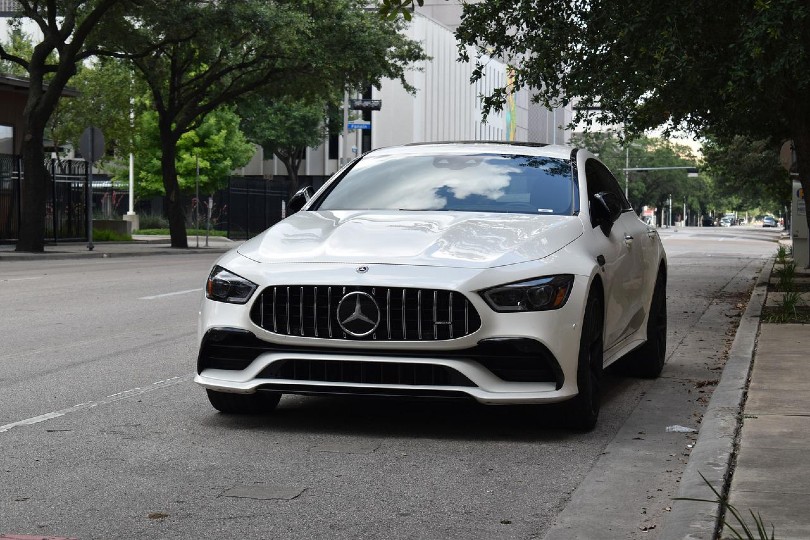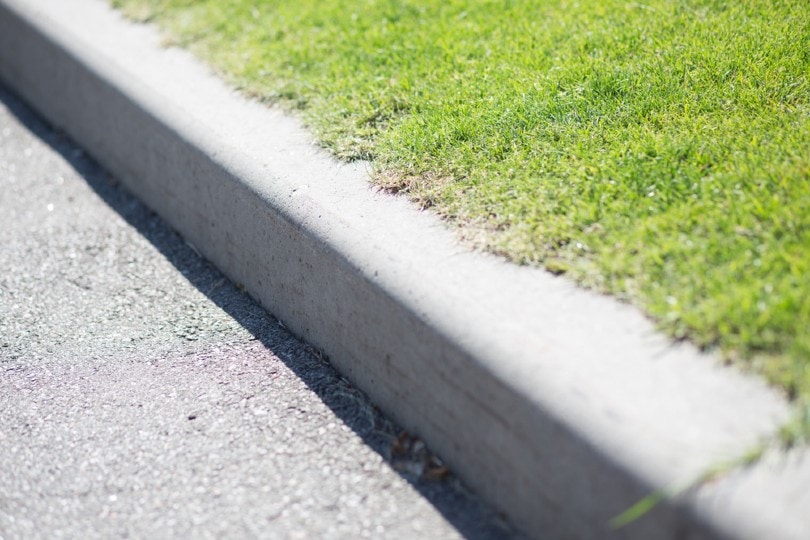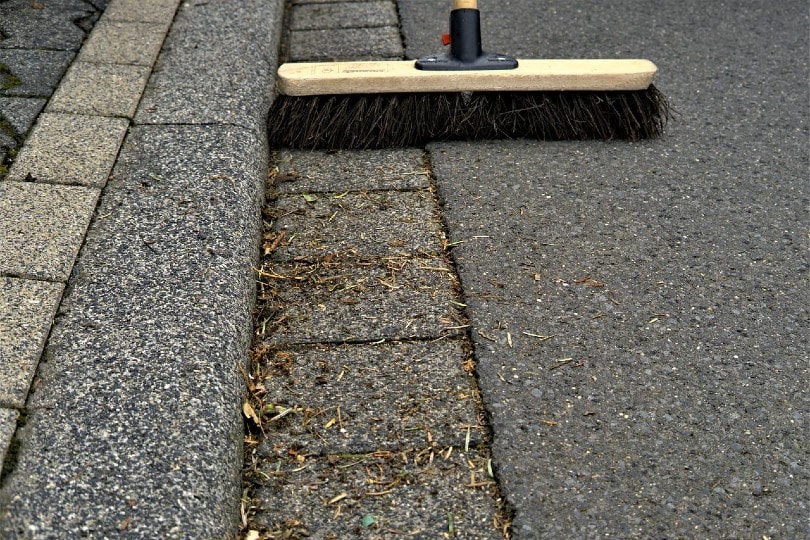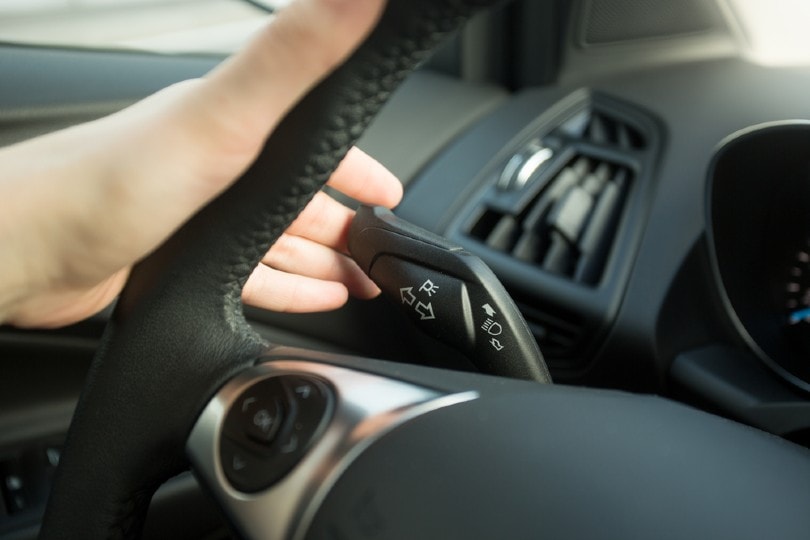How Far From the Curb Can You Park? Steps, Facts & FAQs
-

- Last updated:

The USA has over 270 million cars with around 230 million qualified drivers. As this community of drivers travels(and parks) across the country, they must park within 18 inches of a curb. The exact distance varies widely, with some cities shortening it to 12 inches.
This article will help you understand curb laws and how close you can park.
What Is a Curb?
A curb is a small raise between sidewalks and streets. It is used to differentiate the main roads and streets from adjacent sidewalks and lawns, and most of them are painted in black and white or yellow or take on the natural color of the construction material.
Curbs have been in existence since the earliest Roman civilization, but engineers globally adopted their construction in the 18th century. In modern cities, curbs are more than just a piece of engineering obstructing drivers from parking where they want to.
- They are safety features that protect pedestrians and lawns from rogue drivers. In case of an accident, curbs will direct a flying car back to the street, protecting unsuspecting pedestrians.
- Curbs are like barriers that work to direct rainwater off the street. They channel water to gutters and storm drains far away from the street.
- When built, curbs provide sturdy structural support to weakly designed sidewalks and pavements.
- Curbs are beautiful when painted in bright colors. Thus, they improve the aesthetics of public roads.

How Are Curbs Designed?
The design of curbs varies from country to country, with the most important feature being a lip. A lip or a reveal is the part of a curb that is visible a few inches above the road surface. Basically, a reveal will pop up less than 8 inches above the surface. Some reveals kiss the ground at less than 4 inches to accommodate vehicles with lowered bodies, such as sports cars.
Parking your car 18 inches from the curb protects the front or rear bumper from scratching over the reveal. Additionally, it provides enough space to swing open doors without obstruction.
When designing curbs, other than reveals, engineers must consider curb cuts. These depressed parts of a curb allow wheelchairs to access the main street. They also create a free pass for toddlers and tricycle owners to access the street with little difficulty.
Though a large enough curb cut can accommodate a small car, maintaining the stipulated distance reduces the risk of a traffic citation.
What Are Curbs Made Of?
Being part of a busy street, curbs should be strong to withstand elements and stop a moving car. Common materials include concrete, asphalt, and sometimes masonry blocks. Asphalt blocks are less durable and cheap. Because of that, they are easy to construct and don’t need a foundation.
A mixture of cement and an aggregate densely packed together and cured over time forms the strongest and most durable curbs. You will find these curbs on busy highways, and they are excellent at preventing big trucks from jumping over to pavements.

The 3 Easy-To-Follow Steps on How to Park Next to a Curb
It is easier saying you should park within 18 inches close to a curb than knowing how to do it. Pulling off a perfect park is for chosen few. Here is how to join the list.
1. Find the Right Spot to Park Your Car
While thinking of parking, scan through your windshield for a good spot. Experienced drivers can fix their car in a tight parking space leaving only a few inches on both ends.
To be in a better position, find a parking space that is at least one and half times longer than your car. With this space, you will be able to play around and maintain the required distance between your car and the nearest curb. Furthermore, you will leave enough room for the next driver to pull out without bumping into your vehicle.
Ensure your preferred spot is legal for parking with no ”NO PARKING” signs and not adjacent to any fire hydrants. If you are parking in front of a curb, look at its height. It must not be high enough to destroy your rear bumper in case you accidentally hit it.
2. Use Your Turn Signals
When moving to a parking space, the law requires you to show the other drivers your intentions. Flip on the turn signal switch as you gently step on the brake pedal.
If you intend to park in reverse, move your car to a parallel position with a parked vehicle in front of you, keeping a 2 feet distance in between. Once the other car’s bumper is aligned with the middle of your car, stop. Next, shift the gear lever into reverse.
Ensure the rear is clear as you turn the front wheels to a 45-degree angle away from the spot. Start backing in until the rear wheels are 12 inches away from the curb. Avoid hitting the curb because you will have to pull out again to readjust.
Parking head first is easier and the opposite of the above process.

3. Position Your Vehicle Parallel to the Curb
Once you have successfully occupied your lot, reposition your car to be parallel and 18 inches from the curb. For this, reverse your car until it is almost touching the rear car. Slightly turn the steering wheel in an attempt to pull out but move away from the curb. Slowly accelerate forward to increase the distance between you and the curb.
Repeat these short moves to straighten up.
If you are far away from the curb, back out and do the opposite of the above process.
What Traffic Rules Should You Observe While Parking Close to a Curb?
- Both front and rear wheels must be parallel and within 18 inches off the curb. Parking far away from a curb is an offense too.
- Never park in front of curb cuts.
- Stay away from a red curb(which means no stopping).
Can I Park Next to a Corner Curb?
You can park next to a corner curb, provided it is not painted red, and you are not blocking curb cuts. However, parking here can be complicated. You must stay parallel to all curbs as well as within 18 inches.
How Long Can You Park Next to the Curb in a City’s Parking Spot Without Moving a Car?
You can park on any public street for less than 72 hours. After that, your car will be considered a stored vehicle; hence it can be towed away. If that isn’t the case, traffic officers will issue tickets to the car’s owners, which can amount to hundreds of dollars.
Conclusion
When parking next to a curb, keep the distance between 12 and 18 inches. Judge the distance using your windshield and side mirrors, then slowly bring your car to rest. Any further than this is likely to result in a fine.
- https://www.statista.com/statistics/183505/number-of-vehicles-in-the-united-states-since-1990/#
- https://www.dmv.ca.gov/portal/handbook/california-driver-handbook/parking/#
- https://www.quora.com/How-far-away-from-the-curb-should-you-park
- https://www.xfactordrivereducation.com.au/strict-driver-licensing-exams/
- https://www.statista.com/statistics/198029/total-number-of-us-licensed-drivers-by-state/
- https://www.express.co.uk/life-style/cars/1033215/Parking-error-50cm-away-kerb-fine-UK
Featured Image Credit: ArtisticOperations, Pixabay
Contents

